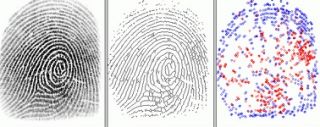
Psychiatry
Diagnostic Breakthrough for Mental Illness
A new method of MRI interpretation allows for objective diagnosis
Posted December 9, 2012
Perhaps the most difficult aspect of clinical psychology/psychiatry is patient diagnosis. The job of the doctor is to properly interpret the patient’s medical history and subjective reports and then determine what possible psychiatric conditions match those listed in the Diagnostic and Statistical Manual of Mental Disorders (DSM). This job becomes even more difficult when a differential diagnosis must be made based upon symptoms that fit multiple psychiatric illnesses. For example, schizophrenia and extreme cases of bipolar disorder might present with very similar symptoms, making a definitive diagnosis nearly impossible.
Much research has focused on finding a way to objectify diagnosis. One proposed way to do this is to use brain imaging. It would be great of doctors could diagnose mental conditions based on imaging data just like they do when diagnosing brain tumors or stroke. But this is not as easy as it seems, for we lack a clear picture of exactly what parts of the brain are involved in many of the most common disorders. Adding to the confusion is the fact that many psychiatric conditions tend to come in groups. For instance, patients with Tourette syndrome, a disorder characterized by repetitive physical or verbal tics, are very likely to also have attention deficit hyperactivity disorder (ADHD) and obsessive-compulsive disorder (OCD). This makes it hard to ensure that imaging data used in research really represents the conditions it is thought to represent because the structures of patients’ brains may vary despite all being diagnosed with the same disorder.

One method of fingerprint analysis.
But researchers have started making progress toward objectifying diagnosis. Two-dimensional images are represented by pixels (tiny little squares) on a computer. Three-dimensional images are represented by voxels (tiny little cubes) The problem with past methods is that they look at differences between each voxel of the brain. Ravi Bansal and colleagues suggest that we need to look at brain imaging data in a different way analogous to how fingerprints are processed. Fingerprints are made by a series of very fine peaks and valleys that give each person a unique signature on the pad of each finger. When crime labs processed fingerprints, they don’t look at every single line but rather the different characteristics composed by many peaks and valleys. For example, fingerprints differ by the number and location of arches, loops and whirls spread over the surface.
Bansal and colleagues have developed a new algorithm that can diagnose brains based on patterns that emerge in the voxels. Unlike before, where diagnostic algorithms were accurate only for subjects that were studied while creating the algorithms, the researchers apparently have found success with an algorithm created using this new method, with high accuracy for diagnosis of ADHD, schizophrenia, Tourette’s, bipolar disorder and low familial risk for major depressive disorder. This seems to suggest that patterns of morphological variation across brain surfaces can be used to successfully diagnose chronic mental disorders.

Tourette's patients suffer from physical or verbal tics.
More research still needs to be done, but this novel approach could lead to a breakthrough that would impact the lives of millions of people. Doctors using diagnostic imaging could more quickly and accurately determine a course of treatment that so many patients desperately need. There are, however, some caveats. First off, more research will need to be done to ensure the success of this algorithm wasn’t due to comorbidity of the disorders studied. Like I mentioned above, Tourette syndrome and ADHD tend to come together. The severity of symptoms tend to fall under a spectrum, thus many patients with Tourette syndrome may have ADHD even though they haven’t been diagnosed with it. Although participants in this study were diagnosed with only one condition, it is possible that they had other undiagnosed ones.
The other caveat is that some of these disorders have very definitive symptoms while others don't. It’s pretty easy to rule other possibilities when a patient presents with symptoms of Tourette’s. But it’s much more difficult to diagnose major depressive disorder. It is possible that many subjects included were misdiagnosed originally, which could skew the results. Nevertheless, this new theory of brain data interpretation does appear to be headed in the right direction. It’s only a matter of time before the hiring committee will want to see your MRI before extending a job offer!

